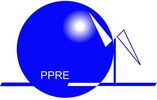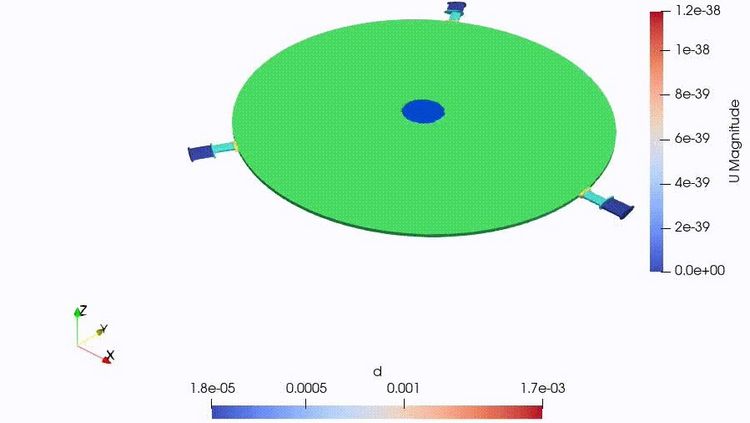Wind farms located in cold regions and high altitudes can benefit from the high wind speeds. However, after ice accretion, wind turbines are shutdown inevitably. To overcome the icing problem, wind turbine blades can be coated with hydrophobic coatings. This work represents the results of numerical simulations of ice accretion on an airfoil with three different coatings. These numerical simulation cases emulate tests performed in an icing test rig at Fraunhofer IWES.
The icing test rig consists of a cold chamber with water droplets injected at the airfoils that are attached to a rotating disk. The simulations are performed using an in-house code implemented in OpenFOAM framework. This new OpenFOAM code uses a compressible Lagrangian approach to simulate water particles transported from the atmosphere to the airfoil surface. On the water film side, Shallow Water Icing Model (SWIM) is used to simulate the icing process. The mechanism for water droplets splashing-off on the airfoil surface is determined by the critical Weber number (Wec) of the coating. The lower the critical Weber number, the less the accretion of ice on the airfoil. Hydrophobic coatings usually have lower critical Weber number than commercial coatings due to their special microscopic structures.
This simulation demonstrates the ability of the in-house icing code to predict ice formation between coatings with different hydrophobic properties. The results show that hydrophobic coatings could be used in the future to reduce the need for high-energy anti-icing measures and facilitate the widespread use of wind farms even in cold climates.
Sources:
www.iwes.fraunhofer.de/en/research-projects/finished-projects-2021/optanice
www.bmwi-energiewende.de/EWD/Redaktion/Newsletter/2018/02/Meldung/forschung-vereiste-rotorblaetter
Content: shahjigaar@gmail.com


